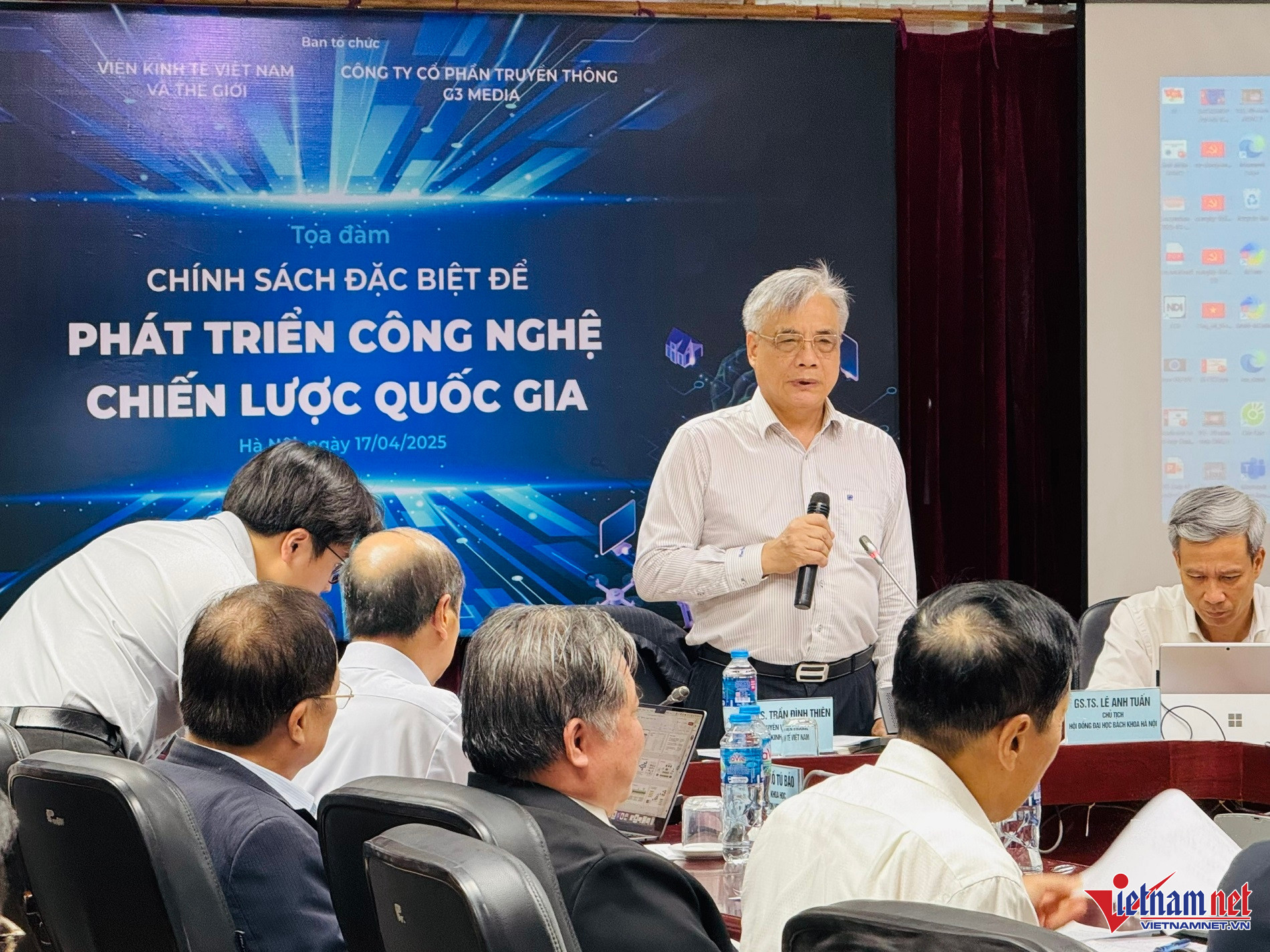
Globally, scientific research is divided into three types: basic, applied, and developmental. The first two often result in papers or patents, while the third, driven by industries, delivers high practical value.
At the seminar discussing “special policies for developing national strategic technologies,” on April 17, Prof Dr Ho Tu Bao, Director of the Data Science Lab, shared data on research budget allocations. The US, France, Germany, and Japan allocate over 60 percent, while China gives 83 percent to developmental research.
Bao noted that Vietnam’s science and technology remains heavily focused on basic research and is not yet integrated into production. Citing the Ministry of Education and Training’s data, with 23,776 PhDs as of August 2024, he noted: “How many contribute to the nation’s production and development?”
Bao observed that Vietnam’s R&D emphasizes research over development. Most research projects are bottom-up, lacking top-down strategic initiatives. He proposed that for national progress, the government should pose grand challenges and rally top scientists for solutions.
No matter how advanced, technology must align with production, a view agreed to by scientists, experts, and businesspeople at the seminar.
Prof Dr Chu Duc Trinh, Rector of the University of Technology, a member school of the Vietnam National University Hanoi, said in the future enterprises will be the core of the science and technology ecosystem. Scientists will belong to the ecosystem and must be closer to enterprises’ R&D divisions.
One of the major goals set by the Politburo’s Resolution 57 is mastering strategic and digital technologies by 2030. To reach that end, Vietnam will not only need state funding, but also broader involvement from society, localities, and enterprises.
Prof Dr Le Anh Tuan, Chair of the Hanoi University of Science and Technology’s Council, said there should be new mechanisms, such as placing orders with scientists through critical research programs; and establishing state-funded and enterprise-run innovation funds, and university innovation alliances.
There also should be a policy to mobilize financial resources from society and businesses, combining intellectuals from research institutions such as universities and research institutes.
For example, in semiconductors, a technology that many countries have identified as strategic, electricity companies such as Electricity of Vietnam (EVN), which needs a lot of semiconductor chips, can coordinate with an organization to support the development of laboratories and equip facilities to conduct research.
Du Lam